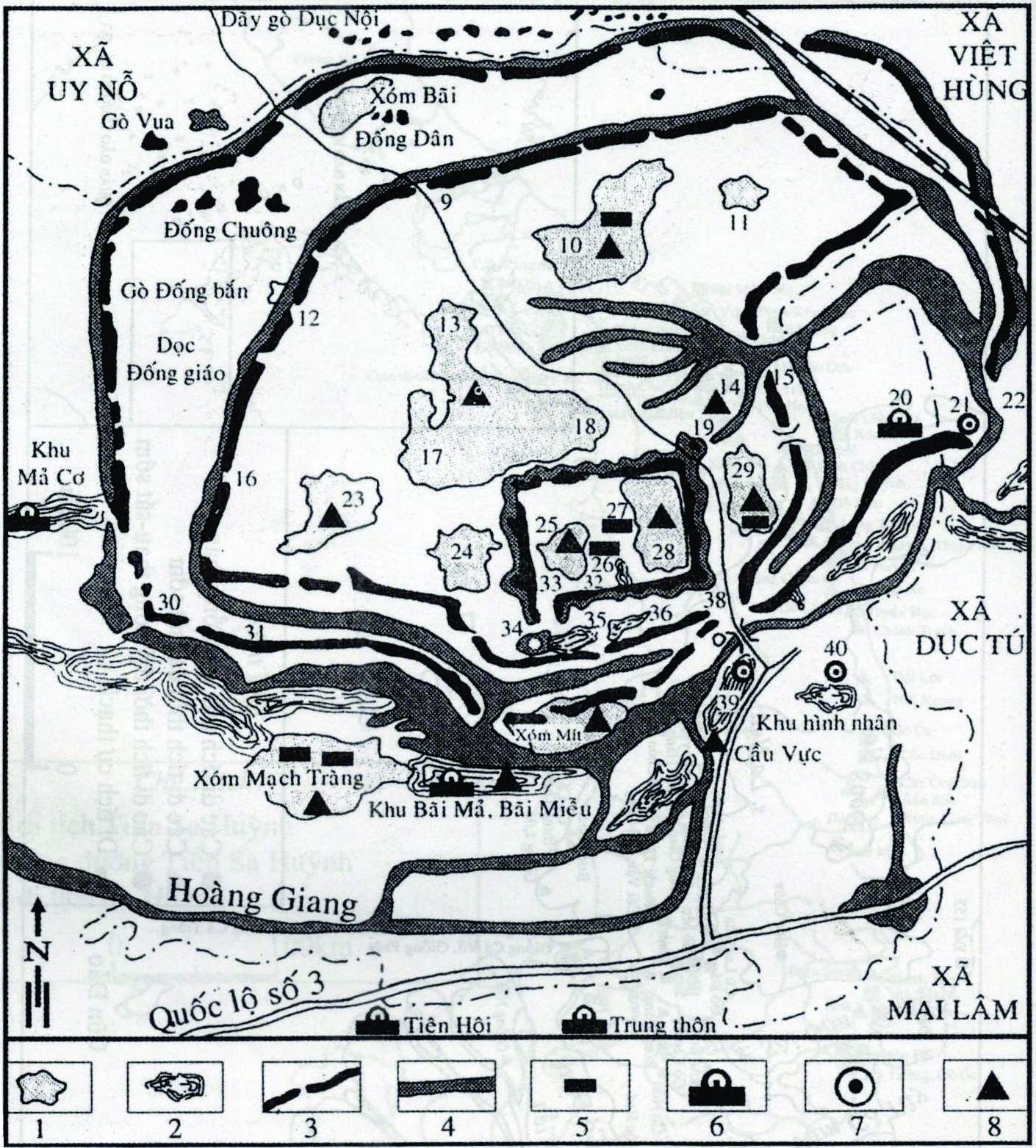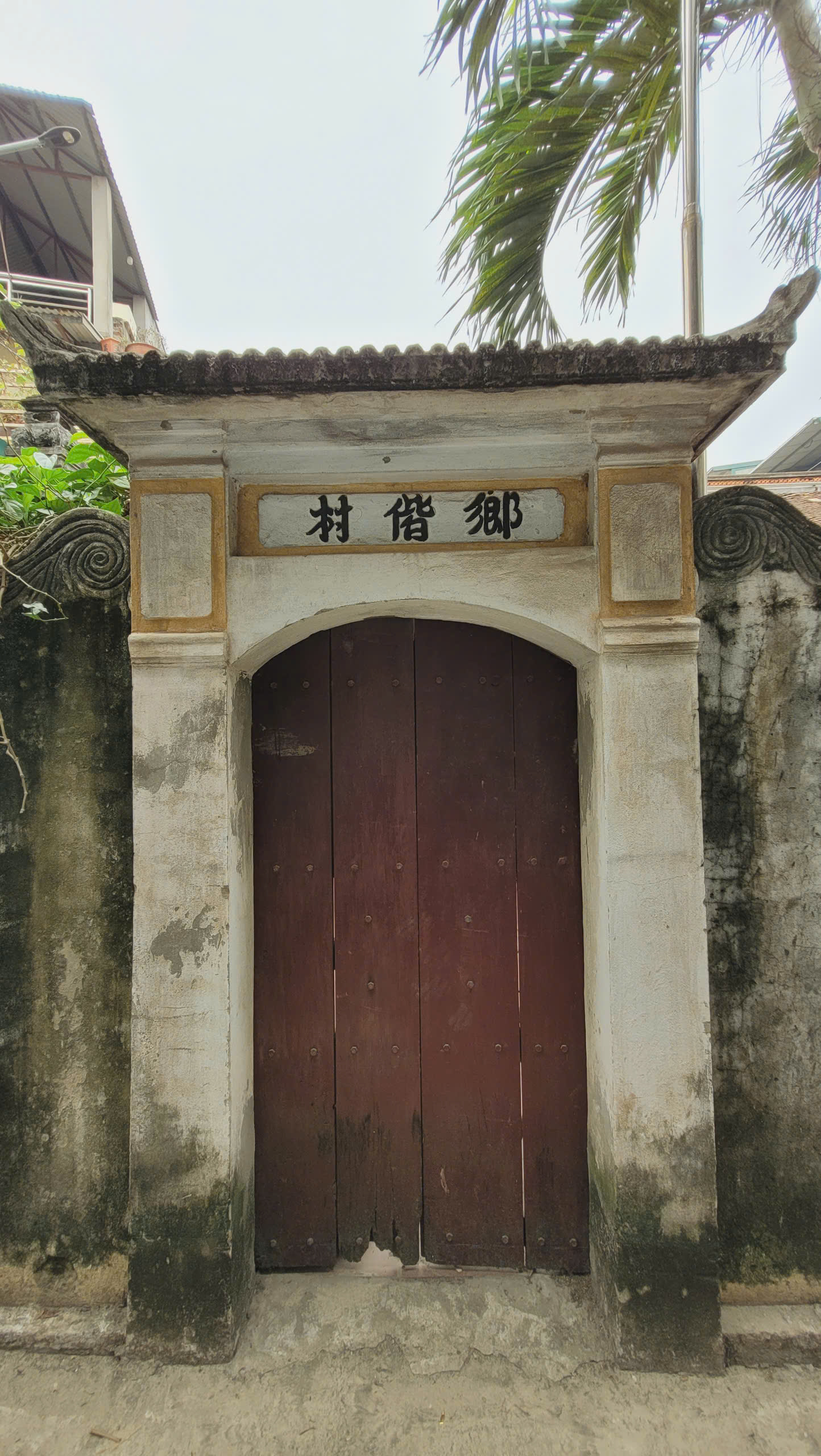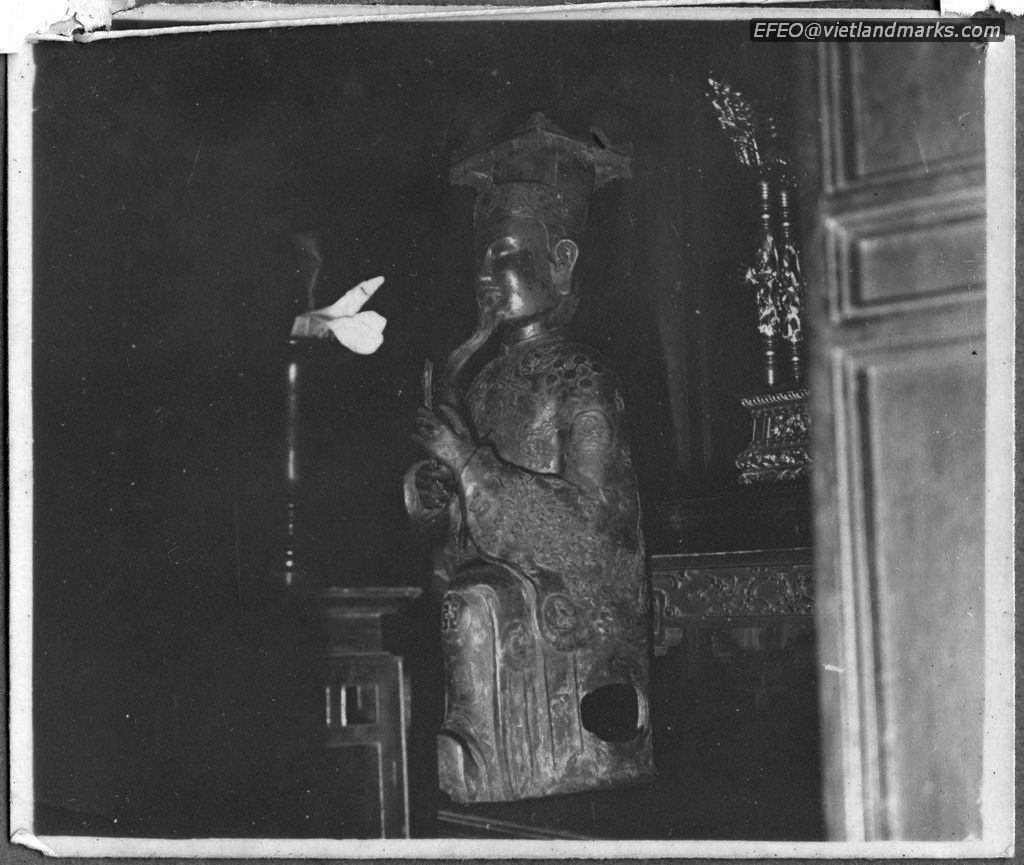
On the occasion of the death anniversary of King An Duong Vuong (March 7th of the lunar calendar) recorded in the book "Ngoc pha co luc", the Management Board of Co Loa Relic Site would like to respectfully send you the article "An Duong Vuong and the Au Lac State" to learn about the merits and career of the king who founded the country in the 3rd century BC, was conferred the title by feudal dynasties and worshiped by the people at Thuong Temple, Co Loa Commune, Dong Anh District, Hanoi.
According to ancient Chinese and Vietnamese historical documents such as Giao Chau Ngoai Vuc Ky, Dai Viet Su Ky Toan Thu, and Kham Dinh Viet Su Thong Giam Cuong Muc, it is recorded that: During the Hung King period, Van Lang country consisted of 15 tribes, with its capital in Phong Chau (Bach Hac, Viet Tri, Phu Tho today). Thuc Phan (King An Duong Vuong) was originally a leader of the Tay Au people, allied with the Tay Au and Lac Viet tribes, organized a resistance war against the Qin army, and was honored by the ancient Vietnamese leaders as the highest commander. In 208 BC, after the victorious resistance war against the Qin army, Thuc Phan was abdicated by the 18th generation King Hung Due Vuong. He ascended the throne, declared himself king, united the Tay Au and Lac Viet tribes, changed the country's name to Au Lac, and continued the Hung King's career. An Duong Vuong decided to move the country's center from the old land of Hung Vuong to Co Loa, a highland of the Red River Delta, vast, fertile and densely populated, with convenient water and land transportation, and a terrain surrounded by large streams connecting to the Red River and Cau River. That is the Hoang Giang River, whose traces are still clear today with sections called Thiep River or Ngu Huyen Khe River (the river flows through 5 districts: Yen Lang, Kim Anh, Dong Ngan, Yen Phong, Tien Du). By waterway, it can go up to the North or Northwest, or down to the Northeast or Southeast, spreading to coastal areas, suitable for establishing a capital, building citadels, building ramparts, and fighting against enemies.
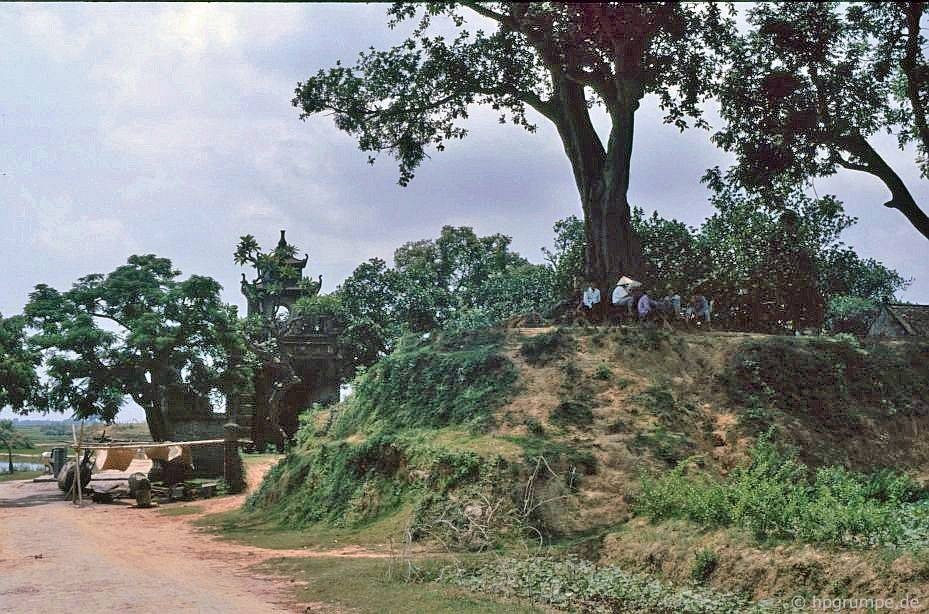
Southwest corner of the Inner Citadel - the location of the Upper Temple (Co Loa) today
Source: Hans-Peter Grumpe, 1991
An Duong Vuong commanded the army and people of Au Lac, and in a short time, built a massive and unique citadel. An Duong Vuong took full advantage of the natural elements of terrain and topography to create a high and deep citadel, with all the favorable elements for defense and attack: water and land were connected, inside and outside were combined, we could advance and retreat quickly, the enemy could hardly invade. With the solidarity of the army and people, and also the legendary archery weapon - "The Divine Crossbow", An Duong Vuong defeated Trieu Da's invading army many times. In 206 BC, the Qin Dynasty fell, Trieu Da in Nam Hai district, conquered Tuong and Que Lam districts, established Nam Viet country, established Phien Ngung as the capital, always wanted to expand the land to the South, and rule Au Lac.
Although the existence of the Au Lac state was not long in the history of the nation, its mark was very strong and this historical period, passed down by the people here as heroic and tragic legends. The existence of Co Loa citadel for more than two thousand years until now is a strong proof of that historical period, proving the outstanding military talent of An Duong Vuong, the persistent labor and the indomitable spirit of our people in prehistoric times.
The legend of An Duong Vuong building Co Loa citadel is mentioned most by Vietnamese people, because it is associated with the history of the first era of nation building and defense, ancient Vietnamese culture and reminds of the origin of the nation. Co Loa festival is associated with an important god, the king who founded Au Lac country and built the "capital" Co Loa/ the citadel with a long history that has been ranked as a special national monument. The whole legend of An Duong Vuong building the capital, building the country, fighting the enemy, lives forever in the hearts of the people and has been passed down through many generations with gratitude and admiration. Therefore, in the villages and communes of Co Loa citadel, there are temples, communal houses, hermitages, and shrines to worship the King and those who have contributed to the people and the country. The first to be mentioned are the localities belonging to the "Eight communes of Loa citadel": Co Loa, Van Thuong, Mach Trang, San Gia, Ngoai Sat, Dai Bi, Cau Ca and Thu Cuu, of which the main temple worshiping An Duong Vuong in Co Loa is considered the "First Immortal Temple".
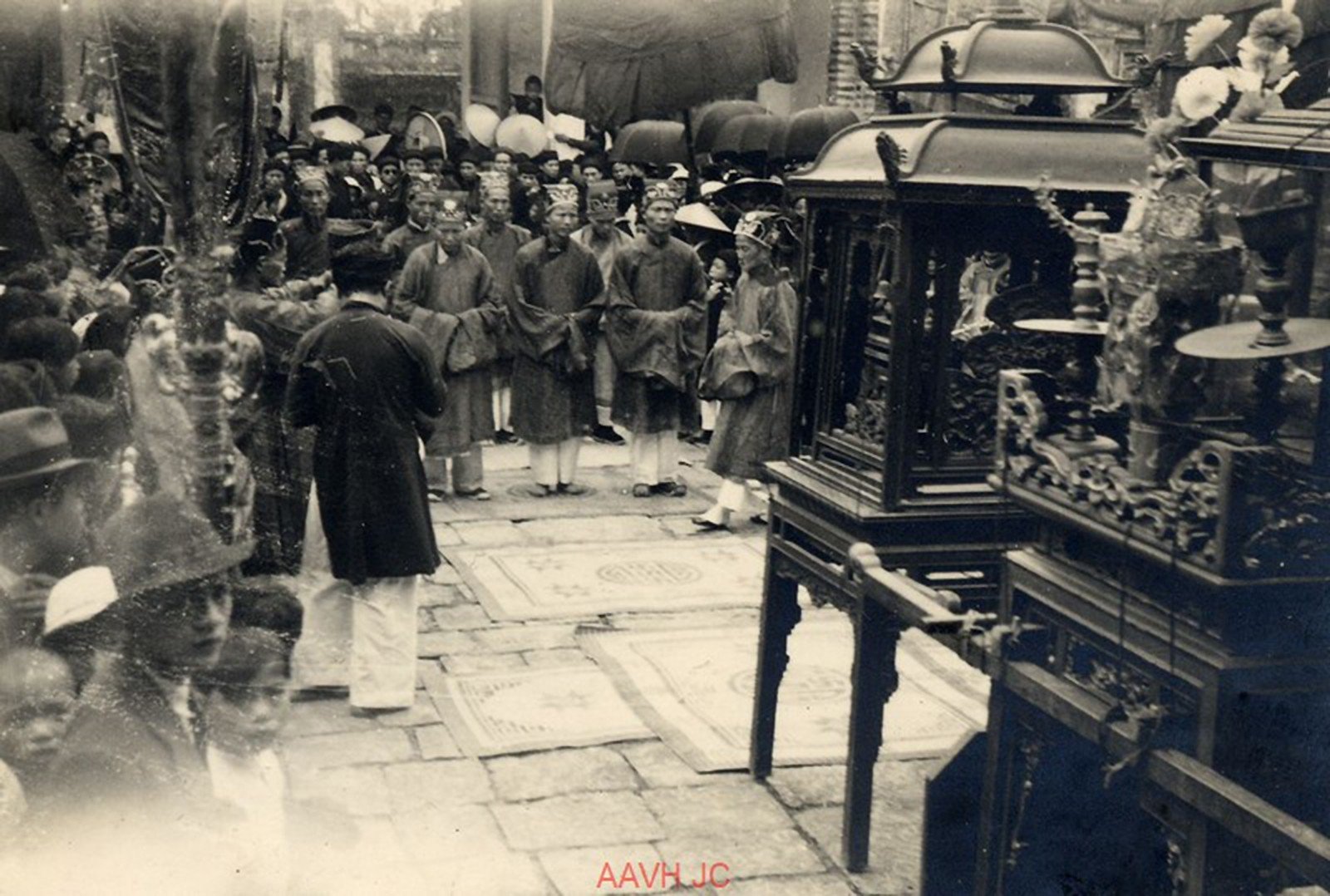 Co Loa Festival (photo taken in the 1940s)
Co Loa Festival (photo taken in the 1940s)
 Statue of King An Duong Vuong (dated 1897, photo taken 1920 - 1930)
Statue of King An Duong Vuong (dated 1897, photo taken 1920 - 1930)
Associated with the image of King An Duong Vuong, in addition to the Co Loa festival which has been listed in the National Intangible Cultural Heritage List by the Ministry of Culture, Sports and Tourism, Co Loa also preserves artifacts and groups of artifacts that have been recognized by the Prime Minister as National Treasures such as: Collection of Co Loa molds (dating from the Dong Son culture, 2,300 years ago), which is real evidence for the legendary Lien Chau Crossbow; Statue of King An Duong Vuong (dating from 1897) currently worshiped in the Upper Temple's Sanctuary, is the embodiment of the main deity, bearing deep cultural, spiritual and religious values; Pair of stone dragons forming the steps of the Upper Temple (dating from 1732) - an image symbolizing the king's royal power.
MANAGEMENT DEPARTMENT OF CỔ LOA VESTIGE SITE
